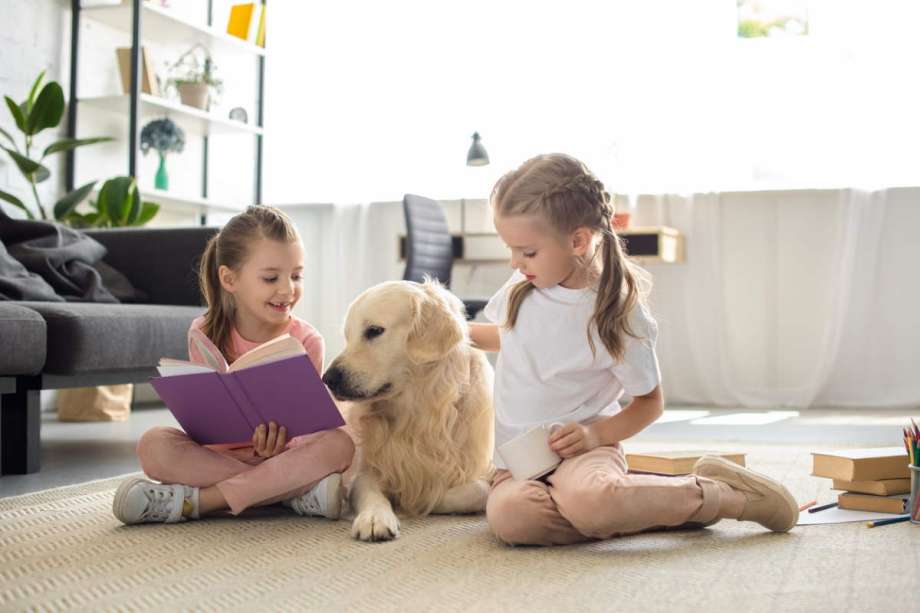How Reading to Pets Can Help Boost Kids' Reading Skills

With millions of students learning from home, parents may have an unlikely teaching assistant closer than they think. A mounting body of research shows that there are many benefits to kids when they read to dogs. Here are four reasons to consider incorporating your family pet into your child’s reading routine.
More: How Pets Can Impact Kids' Mental Health
1. Improve Reading Fluency
Reading to a dog may improve reading abilities, specifically reading fluency (the ability to read accurately and smoothly and quickly comprehend the content). One study found that it was particularly effective among home-schooled students, so – given the number of students who are suddenly experiencing a version of homeschooling – this may be a timely addition to reading lessons!
2. Increase Reading Confidence
For students that reading makes them feel self-conscious, clumsy and uncomfortable, adding a dog can create an environment of happiness and safety around reading, likely because dogs offer a comforting, non-judgmental presence. Students reported feeling more relaxed and confident about reading after experiencing reading to a dog.
3. Kids Will Enjoy Reading More
One consistent finding to come out of studies on reading-to-dog programs is a reported increase in enjoyment of reading and motivation to read overall, even when a dog isn’t present. One study found that 18% of children reported spending more time reading for pleasure as a result of their participation in one such program.
4. Improve Self Confidence Overall
Reading to a dog has been demonstrated to improve the child’s confidence in areas outside of reading: for example, one study found improvements in self-confidence, increased involvement in school activities, and decreased absenteeism in students after they had participated in the program.
Based on growing evidence, it looks like unstructured programs (e.g., your daughter reading to Fluffy on the couch in your living room) may confer the same benefits as more structured programs involving specially trained dogs and facilitators.
While there haven’t yet been any studies done on whether dogs like being read to, anecdotal reports suggest that they do. In fact, shelters across the country like the Humane Society of Missouri’s Shelter Buddies Reading Program, have reading-to-dogs programs for young readers as a way to help kids practice reading, build empathy for pets and socialize shelter pets waiting for their forever families. So there’s no reason not to try it out with your own pet!
Dr. Annie Valuska, PhD, brings more than 15 years of animal behavior experience to her role as a Senior Scientist on the Pet Behavior and Welfare team at Purina. Annie received her PhD in Animal Behavior from the University of California, Davis and served as the Post-Doctoral Behavior Research Fellow at Disney’s Animal Kingdom. Since joining Purina in 2013, she has focused on a variety of research areas including pet enrichment and pet feeding behavior and is an award-winning animal shelter volunteer.